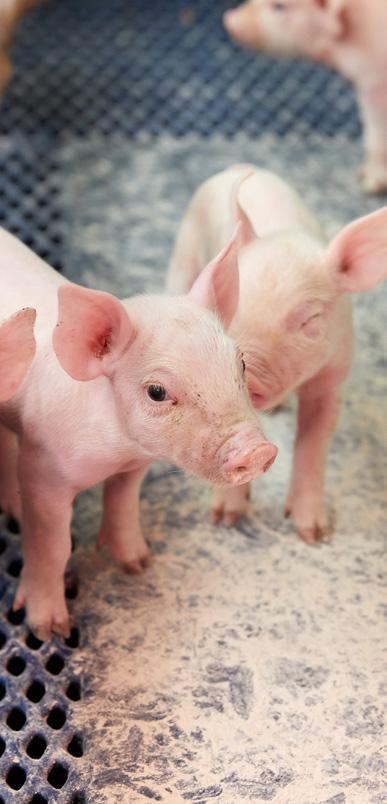
12 minute read
Sustainable entrepreneurship
by Arvesta
Together with our employees, partners, and customers, we work on sustainable, safe, and high-quality solutions and services.
For our planet: Sustainable entrepreneurship
Advertisement
Werner Reuter
Director Sales South Professional
Animal-friendly food alternative Taintstop
CONVINCES MEAT PRODUCERS
Step 1: Taintstop included in ‘Le cochon bien-être’ specifications
Tasty meat from male pigs has been possible for several years without castrating the animals, thanks to Taintstop, the effective, animal-friendly feed alternative developed by Arvesta’s strong brand Dumoulin. Since then, Arvesta has been working hard on ensuring as many end consumers as possible can access this meat from non-castrated animals. This led to a unique partnership between Dumoulin, the Lovenfosse slaughterhouse, local pig farmers and Marcassou in 2021.
9
PIG FARMERS
Step 2: Marcassou puts ‘Le cochon bien-être’ products on the market
Marcassou marketed four products with meat from the quality label ‘Le cochon bien-être’ in 2021. Taintstop is explicitly included in these specifications as a guarantee for better animal welfare. Werner Reuter, Director Sales South Professional: “Nine local pig farmers endorsed the ‘Le cochon bien-être’ specifications. In addition to the use of the feed alternative Taintstop, this also includes a commitment to GMO-free cultivation. The farmer receives proper compensation for the additional costs involved, he is sure of a fixed selling price and the consumer is sure of getting a quality product from local cultivation on his plate. Everything can be recognised by the green quality label with the happy pig.”
Next step: fresh meat ‘Le cochon bien-être’ from the retailer
In 2021, Arvesta also reached an agreement in principle with a major Belgian retailer to offer consumers fresh meat products with the ‘Le cochon bien-être’ label. Consumers can expect these fresh meat products on the market in the course of 2022.
We are pleased that these initial steps are being taken. Another step forward will be engaging the various slaughterhouses. We are already looking forward to the future when this will be the case, so that all pig farmers can sign-up to this animal-friendly method.
END-CONSUMER >
Taintstop
2 weeks before slaughter
400
pigs/week
Slaughterhouse
Meat > > > products >
Lovenfosse (factory) Champlon
4
products
Marcassou
www.marcassou.be/ le-cochon-bien-etre/ View the video on YouTube here
ANTIBIOTIC-FREE
by 2028
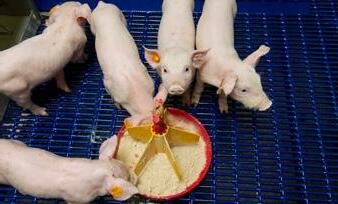
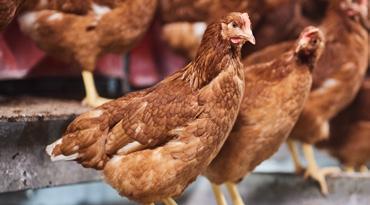
Dirk Bogaerts
Manager Nutritional Solutions Monogastrics
Luc Plessers
Product Manager Pigs
Jan Kindts
Sales Manager Pigs
ARVESTA HELPS FARMERS ENGAGE
All stakeholders have formulated a new commitment through Amcra - the Belgian knowledge centre on antibiotic use and resistance in animals: 75% less antibiotics in animal feed by 2024 versus 2015. Three
years before the deadline, in 2021, Arvesta has realised a reduction of 84% active agents on its key volumes.
Dirk Bogaerts, Manager Nutritional Solutions Monogastrics: “Even if the curve is now flattening out slightly - with a 4% reduction from 2020 to 2021 - we will meet the target. We understand the challenges well and can respond appropriately thanks to the knowledge, experience and efforts of our expert veterinarians, nutritionists and agronomists. Today, for example, we
have reached the point where we have solved 90% of the E. coli problem with
non-medicated feed. So big steps have been taken.”
Luc Plessers, Product Manager Pigs: “Antibiotics are a cheap solution, hence their persistent popularity. But antibiotics are not a sustainable solution. We see it as our duty to continue to raise awareness among farmers on this issue. The authorities, the veterinary profession and consumers; everyone who is involved is going through a changing mentality. Of course, we constantly come up against the economic reality that investing in lower density and modern barn design, i.e. technical factors that help prevent infections, is more likely to occur if the process is profitable. On the other hand, we also see that in difficult times it is mainly the more professional companies that stay the course. Professionalisation and a systematic reduction of antibiotics go hand in hand. And it is this professionalism in all areas - nutrition, management, guidance - that will create a more sustainable, healthier pig farm.”
Arvesta guides farmers in technical and veterinary prevention
Jan Kindts, Sales Manager Pigs: “In addition
to technical interventions, veterinary interventions are also desirable if we want more sustainable livestock farming. Arvesta has that knowledge too. When it comes to infection risks, vaccinations and genetics, the impact of stimulating hyper-fertility, and so on, we can provide pig farmers with comprehensive information so they have an accurate overview of what it means in both the short and long term. This is how we help them make sustainable decisions.”
Continue to invest: Arvesta will launch a renewed piglet health concept in 2022: Balans 2.0
Because the challenges are constantly evolving, Arvesta is constantly improving its feeds, both nutritionally and environmentally. In 2022, for example, we will launch a new health line for piglets: Balans 2.0. The aim is to move towards antibiotic-free piglet rearing. The test project on our trial farm was very promising: a reduction of piglet mortality by 57% without using antibiotics. Initial results on some critical problem farms confirm this result.
Arvesta also anticipates antibiotic restrictions in the broiler sector
Antibiotics are now also used, although not via the feed, on broiler farms to combat infections. But even there, Arvesta is already anticipating the restrictions and ambitious goals of the Amcra. The new Optibalance line of feeds ensures healthier intestinal function resulting in drier litter which offers benefits in terms of the wellbeing of the chickens.
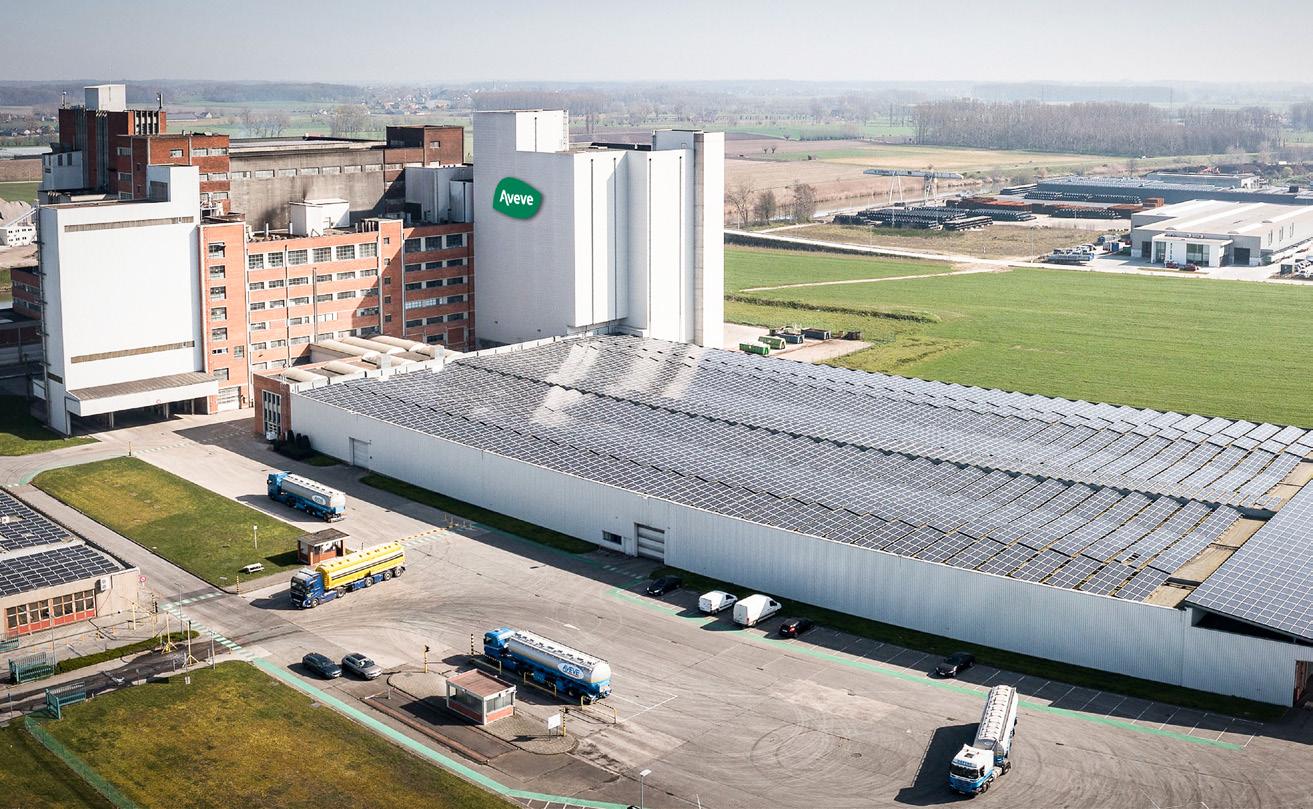
Working towards economical and responsible consumption
WITH SOLAR ENERGY AND ENERGY MANAGEMENT
Solar panels Aveve prevent 805 tonnes of CO2 emissions annually
An analysis of the 50 Aveve owned shops (no franchises) showed that 17 shops were eligible for solar panel installation. After a thorough project study, all 17 shops were fitted with solar panels in the course of 2019. Apart from the Aveve shops, we also looked at which Aveve buildings would be suitable for installation of solar panels in the short term. Aveve Seeds in Landen and Aveve Flour in Merksem qualified and they too have been fitted with solar panels. One year later, these are the sustainable results: 17 of our own shops, 10 in Flanders and 7 in Wallonia: • 73% of the energy generated was selfconsumed, the rest went to the grid • 535 tonnes of CO2 emissions/year avoided • 35% of energy consumption is renewable energy Aveve Seeds in Landen: • 65% of the energy generated was selfconsumed, the rest went to the grid • 151 tonnes of CO2 emissions/year avoided • 30% of energy consumption is renewable energy Aveve Flour in Merksem: • 70% of the energy generated was selfconsumed, the rest went to the grid • 119 tonnes of CO2 emissions/year avoided • 40% of energy consumption is renewable energy
Cedric Jacobs
Indirect Procurement Manager
Climate-positive distribution centre
The supply of goods to each of the Aveve shops is carried out from the climatepositive logistics centre in Wilsele. The centre is climate-positive thanks to heat pumps, solar panels and LED lighting.
First results from the energy management pilot project
In the meantime, 13 Aveve shops have been connected to the nanoGrid energy management platform for a year as part of a pilot project. This system monitors and controls the consumption of gas, electricity and water for each unit, with the aim of maximising the economy of each use. The first results, expected mid-2022, will determine the further roll-out of this system within Aveve. This is expected to save 20-25% of energy consumption.
Production waste is used as secondary raw material for energy generation
Residual flows are released during the production process at our various Arvesta sites (across Belgium). By residual flows, we mainly mean grain residues, corn, chaff, grass seeds, etc. When we have these collected and processed by a specialised supplier, they are given a second life as energy raw materials, which are used in biomass to generate energy. In 2021, a total of about 4,000 tonnes of residual flows have been disposed of.
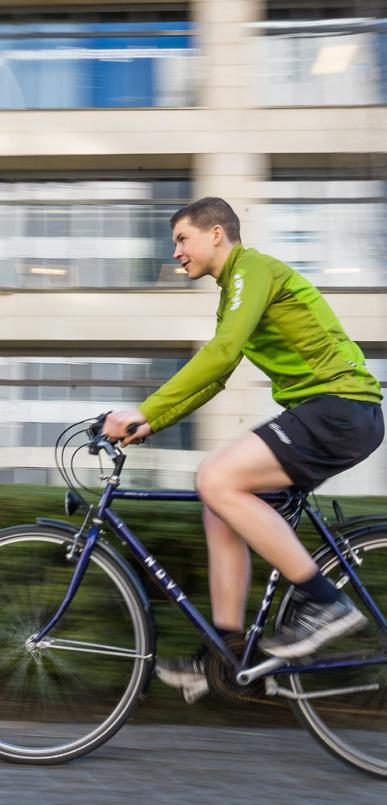
20% of our company vehicles are hybrid/electric by 2024
Arvesta focuses on the bicycle
AND MINIMAL COMMUTING KILOMETRES
Arvesta has two big ambitions for its mobility: it must be more sustainable and it must be more flexible. We are in the process of developing a single overarching mobility plan for this purpose. The bicycle lease pilot project and the definitive introduction of hybrid working, the ‘Arvesta Way Of Working’, were the visible elements of this in 2021.
The bicycle lease pilot project: 1 in 10 workers signed up
In 2021 Arvesta offered the 150 workers at Animal Nutrition in Merksem and Aalter the flexibility of using a portion of their gross salary for a bicycle lease, i.e. a premium (electric) bicycle with maintenance contract and breakdown cover. At the end of the lease contract, after 36 months, the users can decide whether or not to buy the bicycle. The plan was well received.
The modalities were worked out in consultation with the social partners.
And there was interest from the pilot group: 14 out of 150 workers signed up immediately. A second entry point within the same pilot project came in March 2022.
Perihan Silay, Reward Manager:
“The fact that bicycle leasing via the employer is successful is clear from the questions we have received and are still receiving from other sites. Indeed, the intention is to extend bicycle leasing to all Arvesta employees as part of the larger mobility plan.”
The mobility plan is here, now we need the tool
How far has the mobility plan progressed? In 2021, Arvesta mapped out the needs and options according to the mobility profiles in order to offer the most flexible system possible, allowing each individual employee to put together the ideal mobility solution for him/herself. We are now building on this. In 2022, we will define which salary elements can be used for a mobility budget and how much of that budget should be used to finance the choices of the various mobility solutions (such as bicycle lease and public transport). This is a huge task. We have over 2,000 experts, some jobs that do require a company car and some that don’t, blue and white collar workers, 10 joint committees, fixed workplaces and location-independent work; there is definitely not a one-system-fits-all. The next step is to choose the right tool, i.e. a tool that keeps the mobility plan manageable for Arvesta and that works intuitively for our employees. In 2021, Arvesta introduced the hybrid form of working, with structural homeworking, hubs and location-independent working. We are thus reducing the commuting distance to a minimum and making another important contribution to greener mobility. After all, the greenest kilometre is the kilometre that is not driven.
Thanks to the switch to hybrid work, the kilometres driven by the passenger cars in our fleet in 2021 were approximately 30% lower than in 2019.
Ambition for 2024: 20% of company cars electric or hybrid
Company cars are also part of the mobility plan. The ambition for company cars is electrification. By 2024, 20% of new company cars must be electric or hybrid.
Perihan Silay
Reward Manager
Already >50% of raw materials transported over the water
Henk Declerck
Procurement Specialist
Dave Vervoort
Supply Chain Planning Director
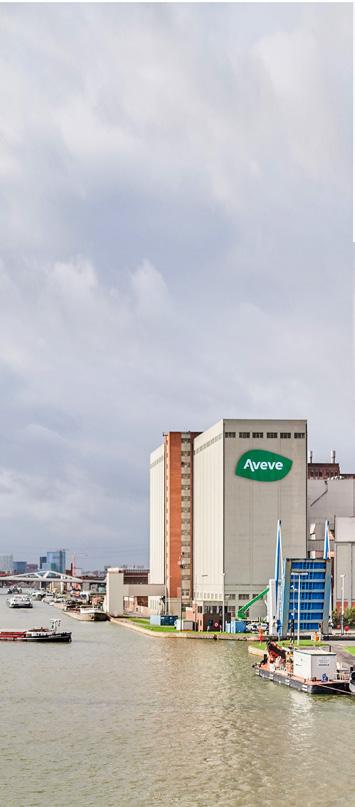
More sustainable transport
THANKS TO A WIDER PLANNING LANDSCAPE
To continue optimising transport, Arvesta is looking at the wider landscape: • not per site but the entire organisation, • not only us but all the transport of the companies that drive for us, • supply and disposal, • including the involvement of the customer/ farmer.
Our motivation is clear: fewer (empty) kilometres + maximum freight = lower CO2 emissions. On the road: in 2021 Arvesta achieved 25.5 tonnes/trip.
From site to network planning
It is advantageous for companies to be part of a network as challenges can be tackled as a group. That is exactly how Arvesta wants to arrange transport: not with schedules per site, but with one network schedule.
Dave Vervoort, Supply Chain Planning Director: “Arvesta will coordinate the order books from its sites to arrange transport as a whole.
This applies to both Arvesta’s orders from suppliers (inbound transport) and customers’ orders at Arvesta (outbound transport).”
Arvesta looks beyond its own borders
Arvesta is committed to expanding the planning landscape beyond its own borders. Transport companies - intense cooperation: We are participating in the optimisation of transport within our suppliers/transporters. Their optimisation should not be limited to transport for our sites, but should be extended to transport for all their customers. This requires intense cooperation, but the benefits are great because fuel is expensive, drivers are scarce and the climate challenges concern everyone. More efficient transport means gains in time, in CO2 and in euros. Henk Declerck, Procurement Specialist: “Arvesta anchors the commitment to sustainable transport by including SLAs (service-level agreements) in its contracts.” Customers/farmers - the ideal trip: Arvesta is conducting a Green Belt project – an improvement project to investigate complex problems and implement solutions - focussing on the ordering behaviour of customers/ farmers. After all, late orders make it difficult to make ideal journeys and should therefore be avoided.
Strategic choice for inland navigation
Even though our end customers tend not to be located at the water’s edge and at least part of the trips have to be made overland, Arvesta relies on inland shipping whenever possible. The efficiency gains go beyond transport alone (e.g. also energy efficiency). 1.2 million tonnes of raw materials transported annually by water • In terms of transport by water of raw materials for the production of animal feed, we have managed to remain at 50% for waterfront plants, which was quite a challenge given the difficulties in finding barges, especially during
September-December 2021. • In 2021, we have transported 371,000 tonnes or 50% of cereals by water. • In 2021, we have transported 206,000 tonnes or 73% of fertiliser by ship. Arvesta continues to monitor transport parameters - volumes, distance, fuel, roads, etc. - to find the most sustainable solution at all times. From April 2022, the project will start to pack 42 bags of feed per pallet instead of 30. As a result, we will reduce the Merksem-Wilsele transport by 30%, a reduction of 275 tonnes of CO2 = 500 fewer journeys per year. And by centralising bagged goods in Wilsele, we achieve an additional reduction of 275 tonnes of CO2 per year.









